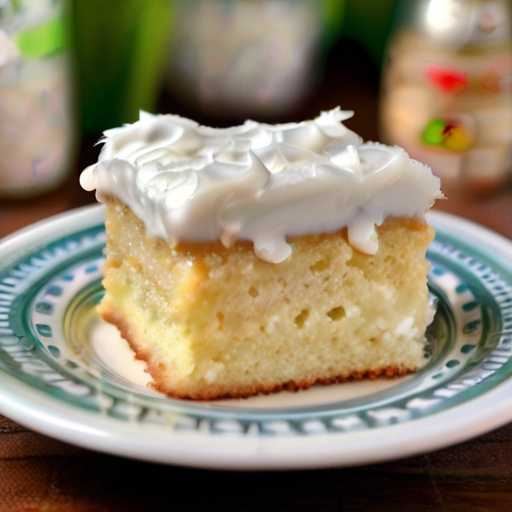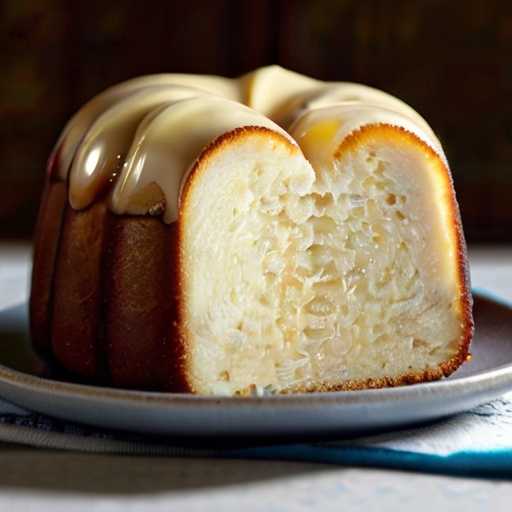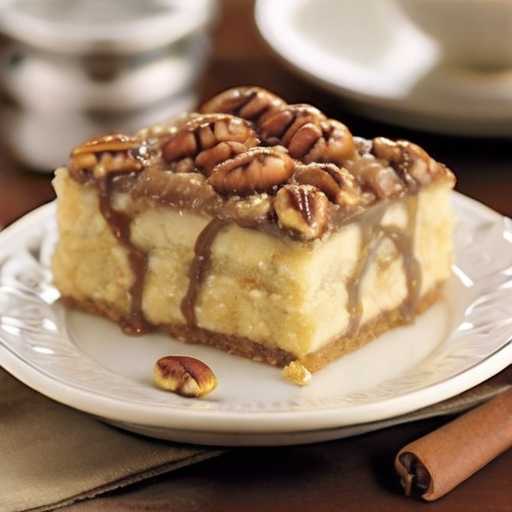Gluten-Free Almond Flour Cornbread Cake
Gluten-Free Almond Flour Cornbread Cake is a delicious blend of traditional cornbread flavors and modern eating. This delicious creation is aimed at those looking for a gluten-free alternative without compromising on taste or texture.
This innovative variation has its roots in the rich culinary tradition of American cornbread and has gained popularity for its ability to meet a variety of dietary needs while providing a satisfying and healthy snack. This cake will be appreciated by those with gluten intolerances or gluten preferences and is a testament to the evolving landscape of inclusive and delicious baking.
Gluten-Free Almond Flour Cornbread Cake
Cuisine
American
Difficulty
Easy
Preparation
15 minutes
Cooking
30 minutes
Ingredients: Gluten-Free Almond Flour Cornbread Cake
- Ingredients:
- 1. 1 cup almond flour
- 2. 1 cup corn flour
- 3. 1/4 cup coconut flour
- 4. 1/4 cup tapioca flour
- 5. 1 teaspoon baking powder
- 6. 1/2 teaspoon baking powder
- 7. 1/2 teaspoon salt
- 8. 1/4 cup honey or maple syrup (for sweetening)
- 9. 1/4 cup melted coconut oil or butter
- 10. 3 large eggs
- 11. Unsweetened almond milk (or Others) 1 cup. Dairy-free milk)
- 12. Optional: 1/4 cup chopped jalapeno or corn kernels for added flavor
- Substitutes:
- • If you don’t have almond flour, you can use another gluten-free flour, such as rice flour or sorghum flour, but the texture may be It may be slightly inferior. different.
- • You can also choose almond flour or another gluten-free flour instead of coconut flour.
- • Tapioca flour can be replaced with an equal amount of arrowroot flour or potato starch.
- • Coconut oil can be replaced with an equal amount of melted butter or another neutral oil.
- • Honey or maple syrup can be replaced with an equal amount of granulated sugar or a sugar substitute such as stevia.
- • Almond milk can be replaced with other non-dairy milks such as soy milk, oat milk, or coconut milk.
Cooking Instructions: Gluten-Free Almond Flour Cornbread Cake
- Preparation:
- 1. Preheat oven to 350°F (175°C).
- 2. Grease or line a 9 x 9-inch baking sheet with parchment paper for easy removal.
- 3. If using fresh corn kernels, peel the corn and cut the kernels from the cob. Set aside.
- Cooking Instructions:
- 1. Combine almond flour, cornflour, baking powder, baking soda, and salt in a large mixing bowl. In order to distribute the ingredients evenly, thoroughly mix.
- 2. In a separate bowl, mix together the honey or maple syrup, melted butter or coconut oil, eggs, and buttermilk until smooth.
- 3. Stirring until just blended, gradually pour the wet ingredients into the dry ingredients. Be careful not to overmix.
- 4. If using fresh corn kernels, carefully incorporate them into the batter.
- 5. Evenly spread out the batter after pouring it onto the baking sheet that has been ready.
- 6. Place the bread in the preheated oven and bake for 25 to 30 minutes, or until the top is golden brown and a toothpick inserted in the center comes out clean.
- 7. Once baked, remove the cornbread cake from the oven and let it cool in the mold for 10-15 minutes.
- 8. Once the cornbread cake has cooled slightly, cut into squares or wedges and serve warm.
- Notes:
- • To ensure even baking, make sure all ingredients are at room temperature before mixing.
- • Do not overmix the dough to avoid making it too dense.
- • Customize this cornbread cake by adding ingredients like jalapenos, cheese, herbs, and more to add flavor.
- • You may keep leftovers in the fridge for up to a week or at room temperature for up to two days when they are kept in an airtight container. If necessary, reheat before serving.
Kitchen tools or utensils: Gluten-Free Almond Flour Cornbread Cake
- Mixing bowls (various sizes)
- Whisk or electric mixer
- Measuring cups and spoons
- Rubber spatula or wooden spoon
- 9×9 inch square baking pan
- Parchment paper or baking spray
- Oven
- Cooling rack
- Knife or cake tester (to check doneness)
- Optional: Food processor (to grind the almond flour if not pre-ground)
- Optional: Colander or fine sieve (to sift the almond flour) )
- Optional: Kitchen scale (for precise measurements)
- Optional: Cake stand or platter (for display)
Tips for perfecting the flavor of Gluten-Free Almond Flour Cornbread Cake:
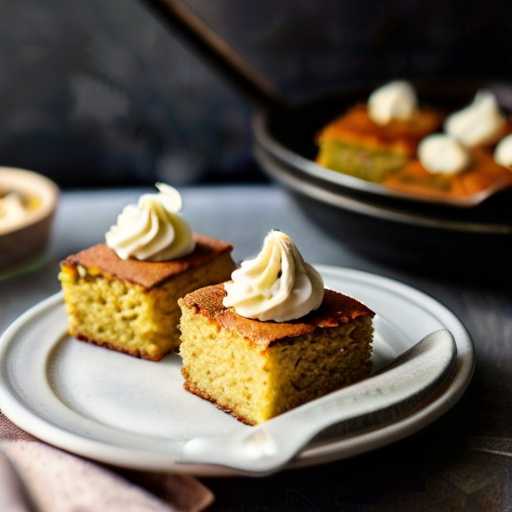
- 1. High-quality ingredients: especially gluten-free flour and almond flour Regarding, use high quality materials. Fresh organic ingredients greatly improve the flavor profile.
- 2. Balanced sweetness: Adjust the amount of sugar or sweetener used in a recipe to achieve balanced sweetness. Too much sweetness will make the cornbread less flavorful, too little and it will be bland.
- 3. Flavor with honey or maple syrup: Consider using natural sweeteners like honey or maple syrup to add depth of flavor. These also bring out the nutty flavor of almond flour.
- 4. Aromatic fats: Choose aromatic fats such as butter or coconut oil to increase the richness of your cake. These fats can add subtle depth to cornmeal and almond flour.
- 5. Add Vanilla Extract: Adding a little high-quality vanilla extract enhances the overall flavor of the cake and creates a warm, aromatic essence that pairs well with the nuttiness of the almond flour.
- 6. Add citrus zest: Fresh citrus zest, such as lemon or orange, can add brightness and freshness to the flavor of your cake. It balances satiety and provides a refreshing note.
- 7. Experiment with spices: Season your gluten-free cornbread cake with cinnamon, nutmeg, or even a pinch of cayenne pepper for a subtle kick. These spices can enhance flavor without affecting the delicate balance.
- 8. Textural Contrast with Corn Grains: Consider adding whole or partial pureed corn grains to the dough for textural contrast. It not only adds sweetness, but also enhances the flavor of authentic cornbread.
- 9. Buttermilk for flavor: Add buttermilk to recipes to give the cake a subtle flavor and enhance the sweetness of the cake. It also helps achieve a moist texture.
- 10. Taste and adjust: Always taste the dough before baking and adjust the seasoning and sweetness to your liking. This means you can customize the taste to your liking and get perfect results every time.
Serving Suggestions: Gluten-Free Almond Flour Cornbread Cake
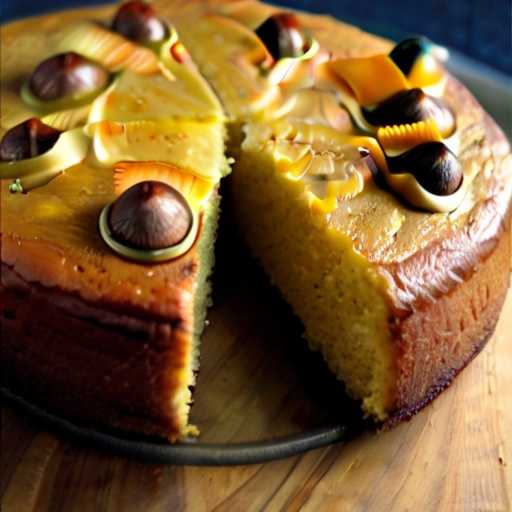
- 1. Serving Instructions: Place cornbread cake on a clean decorative plate. Make sure the slices are cut cleanly to emphasize the texture and golden hue.
- 2. Garnish: Sprinkle a pinch of finely chopped fresh herbs, such as parsley or chives, over the top of the cornbread cake. This adds color and freshness to the dish.
- 3. Sides: Serve a dollop of honey or maple butter on the side of the cornbread cake. The sweetness of the butter complements the slightly savory flavor of the cornbread cake and enhances the overall flavor.
- 4. Side Dishes: Consider serving cornbread cake with a crispy green salad and a light vinaigrette. A refreshing salad provides a contrast of flavors and textures that balance out the richness of the cornbread cake. Additionally, warm homemade chili or hearty soups pair well with cornbread cake for a complete and satisfying meal.
- 5. Drink Pairings: Pair gluten-free almond flour cornbread cake with iced tea or refreshing lemonade for a delicious combination. Alternatively, a hot cup of coffee or tea enhances the warm, comforting properties of cornbread cake, making it perfect for brunch or dessert.
Gluten-Free Almond Flour Cornbread Cake Storage and Leftovers:
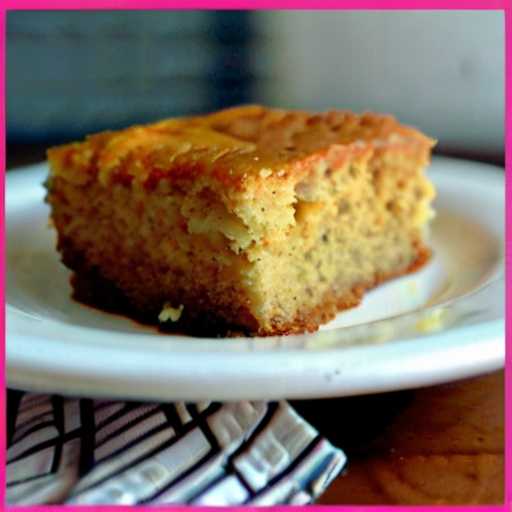
- 1. Storage:
- • Allow cornbread cake to cool completely before storing.
- • Cut the remaining portion into slices or squares as desired.
- • Place slices in an airtight container or wrap tightly in plastic wrap.
- • To maintain freshness, store container in the refrigerator.
- • Gluten-free cornbread cake will keep for 3-4 days in the refrigerator if stored properly.
- 2. Warming up:
- Microwave: Place one slice on a microwave-safe plate and heat on high for 20 to 30 seconds or until heated through.
- Oven: Preheat oven to 350°F (175°C). Place the slices on a baking sheet and cover loosely with aluminum foil to prevent drying. Cook for 10-15 minutes or until desired temperature.
- For larger portions or whole cakes:
- a. Oven: Preheat oven to 300°F (150°C). Wrap the entire cake or any remaining portion tightly in aluminum foil. Place in the oven for 10-15 minutes or until heated through.
- B. Steaming: If you want to retain moisture, put the slices in a steamer and steam them over boiling water for 5-7 minutes.
- • After reheating, serve your gluten-free cornbread cake warm and enjoy its comforting taste all over again.
Nutritional Value of Gluten-Free Almond Flour Cornbread Cake
- • Serving Size: 1 slice (for standard serving size)
- • Calories: Approximately 200-250 kcal
- • Fat: approximately 12-15 grams
- • Protein: approximately 4-6 grams
- • Carbohydrates: approximately 20-25 grams
- • Dietary fiber: approximately 2-3 grams
- These values are approximate and may vary Please note that there may be cases. Recipe about ingredients and amounts used.
Health Benefits: Gluten-Free Almond Flour Cornbread Cake

- 1. Gluten-free treats: People with gluten intolerance or celiac disease can enjoy baked goods without adding anything by choosing a gluten-free alternative like almond flour. Side effects. This cornbread his cake is a safe and delicious option for those who need to avoid gluten.
- 2. Nutrition in Almond Flour: Almond flour, the main ingredient in this cake, is a powerhouse of nutrition. It’s rich in healthy fats, protein, fiber, vitamins, and minerals. Eating almond flour supports heart health with a balanced nutritional profile, helps with weight management, and provides sustainable energy.
- 3. Lower glycemic index: Compared to traditional wheat-based cakes, this gluten-free cornbread cake typically has a lower glycemic index. Almond flour and corn flour slow the release of sugar into the bloodstream and help maintain stable blood sugar levels. This makes it a good choice for people who suffer from diabetes or want to regulate their blood sugar levels.
- 4. Rich in antioxidants: Corn flour, a key ingredient in this cake, contains antioxidants such as carotenoids and ferulic acid. By protecting cells from free radical damage, these compounds fight oxidative stress, reduce inflammation, and support overall health.
- 5. Promotes Digestive Health: Almond flour and cornmeal are both excellent sources of fiber and are essential for maintaining a healthy digestive system. Fiber supports gut health by promoting regular bowel movements, preventing constipation, and feeding beneficial gut bacteria.
- 6. Nutritious Alternative: Compared to traditional wheat-based cornbread, this gluten-free version with almond flour has a higher concentration of essential nutrients per serving. It provides useful fats, proteins, vitamins such as vitamin E and B vitamins, and minerals such as magnesium and iron.
- 7. Satiety and Weight Control: The combination of almond flour and corn flour in this cake provides a balance of macronutrients, including healthy fats and protein, contributing to increased satiety. Eating a slice of this gluten-free cornbread he cake can help curb your appetite and support your weight management efforts.
DIY vs. Professional Bakery: Gluten-Free Almond Flour Cornbread Cake
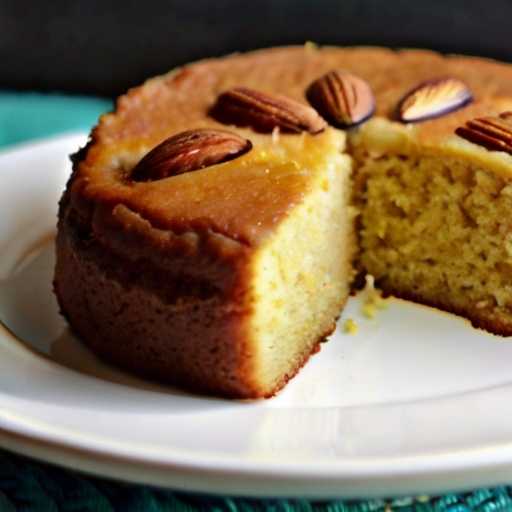
DIY: Gluten-Free Almond Flour Cornbread Cake
- Advantages:
- 1. Customization: You have complete control over ingredients and can adjust recipes to suit your tastes and dietary restrictions.
- 2. Cost-effective: In general, baking bread at home can be more budget-friendly because you don’t have to pay the labor and overhead costs of a professional bakery.
- 3. Flexibility: You are more flexible as you can adjust recipes according to available ingredients and personal taste preferences.
- 4. Learning Experience: Baking bread at home can be an enriching learning experience and help you learn new skills and techniques.
- 5. Satisfaction: There’s a sense of accomplishment in creating something delicious from scratch in your own kitchen.
- Disadvantages:
- 1. Time consuming: Baking from scratch requires time and effort from gathering ingredients to preparing and baking.
- 2. Required Skills: Baking is an exact science and without the appropriate knowledge and experience there is a risk that the final product will not meet expectations.
- 3. Equipment needs: You may need specialized kitchen appliances or tools that you don’t already have, which can increase your overall costs.
- 4. Inconsistency: Especially with gluten-free baking, it can be difficult to achieve consistent results due to variations in ingredients, oven temperatures, etc.
- 5. Trial and Error: Recipes require multiple attempts to perfect, potentially wasting ingredients and time.
- Budget Considerations:
- • Ingredients: Purchasing gluten-free ingredients such as almond flour, corn flour, and specialty foods may seem expensive at first, but if you do multiple baking projects, It may be more economical in the long run.
- • Equipment: Consider the cost of any specific baking equipment that may be required. B. Use a cake pan or mixer and evaluate whether it is a one-time investment or can be used for other purposes.
- • Additional costs: When baking bread at home, there are electricity and gas costs associated with using the oven, but these are generally minimal compared to the total cost.
- • Scale: Decide whether to bake a single cake or multiple batches, as purchasing in bulk can result in material cost savings.
Professional Bakery: Gluten-Free Almond Flour Cornbread Cake
- Advantages:
- 1. Expertise: Professional bakers have the expertise and experience to ensure high-quality results.
- 2. Convenience: Outsourcing the baking process saves time and effort, especially for people with busy schedules.
- 3. Consistency: Professional bakeries have standardized recipes and procedures, resulting in a consistent and reliable product.
- 4. Presentation: Professional baked goods often have a perfect presentation, making them suitable for special occasions and events.
- 5. Variety: Bakeries may offer a wider range of gluten-free options and flavors, giving customers more choice.
- Disadvantages:
- 1. Cost: Professional baked goods can be more expensive due to labor, overhead, and material costs.
- 2. Limited Customization: Some bakeries may offer customization options, but the level of customization may be more limited than when baking at home.
- 3. Availability: Depending on your area, it can be difficult to find a bakery that offers gluten-free options, let alone certain products like cornbread cake.
- 4. Allergen Cross-Contamination: People with severe allergies should consider the risk of cross-contamination in commercial kitchens, including gluten-free bakeries.
- 5. Dependency: Reliance on a professional baker can limit your baking skills and creativity over time.
- Budget Considerations:
- •Price per Unit: Compare his cost per serving when buying from a bakery versus making it yourself, taking into account shipping and additional costs.
- • Special orders: Some bakeries may require minimum order quantities or charge additional fees for customization, which can affect the overall cost.
- • Quality and Price: Consider the balance between cost and quality to ensure that your bakery’s products meet your customers’ expectations and dietary needs.
- • Value of time: Evaluate the value of time spent baking and the convenience of shopping at the bakery, especially for people with busy schedules.
Budget-Friendly Options for Gluten-Free Almond Flour Cornbread Cake:
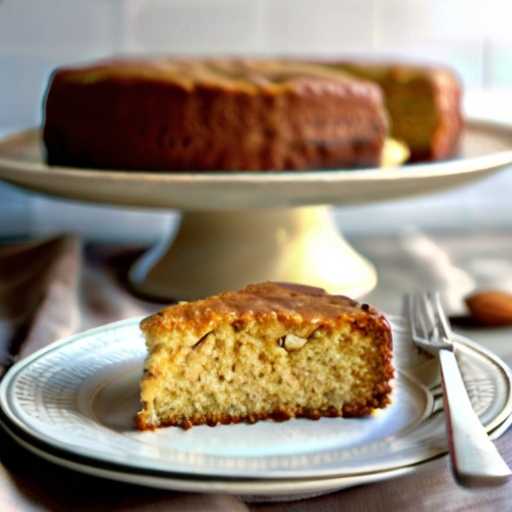
- 1. Decorating Ideas:
- • Use natural elements: Decorate the cake with fresh fruit like sliced strawberries or blueberries for a pop of color. Masu.
- • DIY Cake Topper: Use toothpicks and construction paper to create a simple cake topper that spells out “gluten free” or “cornbread cake.”
- • Dust with powdered sugar: For an inexpensive and elegant look, sprinkle powdered sugar over the top of the cake.
- • Edible flowers: Add edible flowers such as pansies and nasturtiums to cakes for a beautiful and inexpensive decoration.
- 2. Creative Solutions:
- • Reuse kitchen utensils: Cut the cake into fun shapes with cookie cutters or use muffin tins for individual servings for a unique presentation.
- • Flavored syrups: Use ingredients such as honey or maple syrup to create simple syrups with flavors such as cinnamon or vanilla and sprinkle them over cake slices.
- • Nut Topping: Add texture and flavor to your cake with toasted almond slices or chopped nuts without using expensive ingredients.
- • DIY Frosting: Make a simple glaze using powdered sugar and non-dairy milk, then add flavor with citrus zest or cocoa powder.
- With Religious Symbols:
- 1. Cross: Carefully crafted from almond flour, the cake is decorated with an edible cross symbolizing faith and spiritual nourishment. Every bite is a reminder of God’s presence in every aspect of life.
- 2. Angel: Add focus to your dessert experience as edible angel figurines adorn the surface of the cake. These celestial bodies symbolize protection and guidance and will ensure that you enjoy all the flavors of heaven.
- 3. Dove: Enjoy the purity and peace expressed by the edible dove motif placed gently on top of the cornbread cake. These symbols of the Holy Spirit will add tranquility to your culinary journey.
- Symbolic Color:
- • White: The pure white hue of our cake reflects purity and holiness and symbolizes the divine perfection of ingredients and preparation.
- • Golden Brown: The warm golden brown color of cornbread cake symbolizes wealth and blessings and reminds us of the richness of a life of faith.
Gluten-Free Almond Flour Cornbread Cake variations:
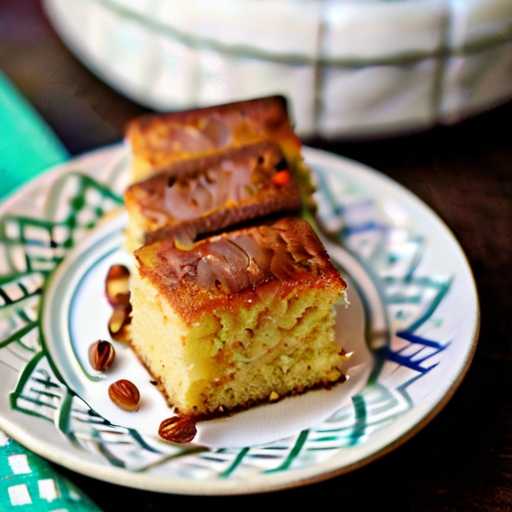
- 1. Blueberry Bliss: Add fresh blueberries to the batter to add juicy sweetness to the cake.
- 2. Maple Pecan Delight: Add chopped pecans to the batter and drizzle with maple syrup before baking to add a sweet, nutty flavor.
- 3. Lemon Peel Infusion: Mix lemon peel into the batter to add a refreshing citrus flavor that complements the hearty texture of cornbread.
- 4. Cinnamon Spice Sensation: When ground cinnamon is mixed into the dough, it creates a warm, comforting flavor reminiscent of classic cornbread with a hint of sweetness.
- 5. Savory Herb Twist: Add chopped fresh herbs like rosemary or thyme to the dough for a flavorful twist that pairs well with savory dishes.
- 6. Chocolate Chip Treats: Add dairy-free chocolate chips for a decadent treat to satisfy your sweet tooth.
- 7. Cranberry Orange Burst: Mix dried cranberries and orange zest into the batter for a zesty, fruity version that’s perfect for brunch or dessert.
- 8. Sesame Seed Surprise: Sprinkle sesame seeds on the cake before baking for a subtle nutty flavor and crunchy texture.
- 9. Cheddar Jalapeño Kick: Stir grated cheddar cheese and diced jalapeños into the batter to add a spicy, cheesy flavor to traditional cornbread.
- 10. Honey Butter Bliss: Add a dollop of whipped honey butter to a slice of warm cake for a rich and delicious treat.
Why Gluten-Free Almond Flour Cornbread Cake stands out:
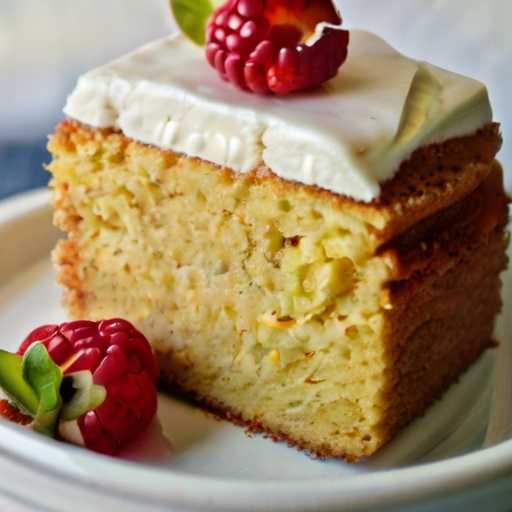
- 1. Focus on gluten-free: The keyword “gluten-free” immediately grabs the attention of people with gluten intolerance or celiac disease. This distinguishes it from traditional cornbread cakes and makes it accessible to a wider audience.
- 2. Choose an alternative flour: Using almond flour instead of wheat flour gives this cornbread cake a unique feel. Almond flour not only meets gluten-free requirements, but also gives the cake a delicious nutty flavor and moist texture that sets it apart from traditional recipes.
- 3. Health conscious: Almond flour is known for its nutritional benefits, including high protein and healthy fat content. This aspect may appeal to health-conscious consumers who value nutritious ingredients in baked goods.
- 4. Innovative Flavor Profile: While maintaining the classic essence of cornbread, the addition of almond flour provides a delicate yet unique flavor profile. Combining corn and almond flour creates a harmonious blend of textures and flavors that enhance the overall cooking experience.
- 5. Inclusivity: Offering gluten-free options that don’t compromise on taste and texture, this cornbread cake promotes inclusivity in the dining experience. Those with gluten intolerance can continue to enjoy their favorite comforting foods without feeling left out.
- 6. Versatility: Gluten-free cornbread cakes made with almond flour are versatile and can be served in a variety of settings. Its adaptability further enhances its appeal: as a hearty chili garnish, added to brunch spreads, or as a stand-alone dessert with honey or jam.
Recipe Notes: Gluten-Free Almond Flour Cornbread Cake
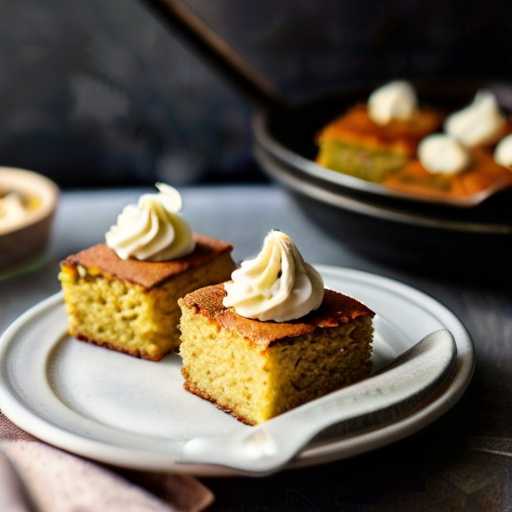
- • Gluten-Free Cornbread Cake with Almond Flour: This recipe is a delicious twist on traditional cornbread and is suitable for those on a gluten-free diet. . Using almond flour instead of wheat flour not only removes gluten, but also gives the cake a rich nutty flavor and moist texture.
- • Cultural Significance: Cornbread is deeply rooted in American culinary history, and is a staple food, especially in the American South. Its origins date back to Native American cuisine, where corn was an important ingredient. Various adaptations and regional variations have emerged over time, including this gluten-free version that accommodates modern dietary preferences and restrictions.
- • Health Benefits of Almond Flour: Almond flour is a nutritious alternative to traditional wheat flour. It’s naturally gluten-free and rich in protein, healthy fats, and vitamins like vitamin E and magnesium. Plus, almond flour adds moisture to baked goods, giving them a soft crumb and rich flavor.
- • Success Tip: When baking gluten-free, it is important to ensure that all ingredients are certified gluten-free to prevent cross-contamination. Also pay attention to the texture of the fabric. Gluten-free dough tends to be thicker than conventional dough. So don’t worry if the consistency looks different. Finally, wait until the cake has completely cooled before cutting to prevent it from crumbling.
- • Customize: Try customizing the flavor of your gluten-free cornbread cake by adding additional ingredients. For a unique twist, add flavorful ingredients like diced jalapeños, shredded cheese, and fresh herbs. Or, for a sweeter option, mix in berries, chopped nuts, or a drizzle of honey for added sweetness.
- • Serving Instructions: This gluten-free cornbread cake pairs well with a variety of dishes. Enjoy as a hearty meal with soups, stews, and chili, or as an accompaniment to barbecued, grilled meats, and roasted vegetables. It’s delicious as a snack or dessert, or served with whipped cream or vanilla ice cream.
- • Storage: Leftovers from this gluten-free cornbread cake can be stored in an airtight container at room temperature for 3 days or in the refrigerator for up to 1 week. You can also freeze individual slices for long-term storage. Simply wrap tightly in plastic wrap and aluminum foil and place in a freezer-safe bag or container. To reheat, thaw the slices in the refrigerator overnight or briefly warm them in the microwave.
Cornbread Cake FAQ: Gluten-Free Almond Flour Cornbread Cake
- 1. Can I bake cornbread cakes in advance?
- • Yes, cornbread cakes can be made in advance and stored in an airtight container at room temperature for up to 3 days.
- 2. Can you freeze cornbread cake?
- • Of course! Wrap the cooled cake tightly in plastic wrap and aluminum foil and place in the freezer. It can be stored frozen for about 3 months.
- 3. How do I reheat a cornbread cake?
- • To reheat a cornbread cake, place it in a preheated oven to 175°C (350°F) for 10 to 15 minutes, or until warmed through. Leave it until
- 4. Can you bake a cornbread cake without eggs?
- • Yes, you can replace the eggs in your cornbread cake with alternatives like flaxseed eggs or applesauce to make a vegan-friendly version.
- 5. What can you eat with cornbread cake?
- • Cornbread cake pairs well with a variety of dishes, including chili, soups, and barbecue, but it can also be enjoyed on its own with coffee or tea. can.
In summary, this gluten-free cornbread cake recipe with almond flour is a delicious twist on a classic. By replacing regular flour with almond flour, it maintains a moist, flavorful consistency while also being suitable for those with gluten intolerance. The combination of corn flour and almond flour creates a rich nutty flavor that is complemented by the sweetness of the honey. Made with simple ingredients and easy preparation, this gluten-free cornbread cake is sure to satisfy your craving for a comforting treat without compromising your nutritional needs.


